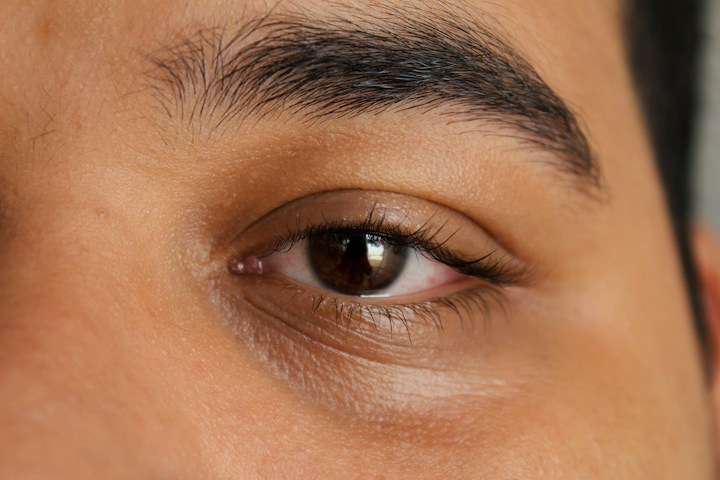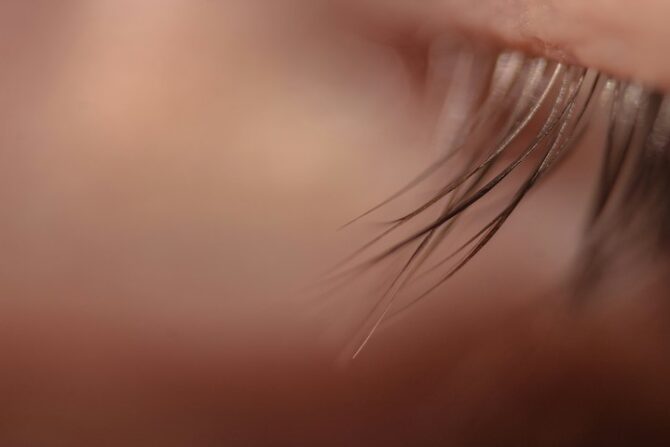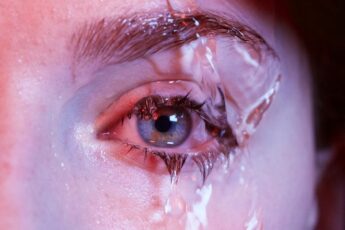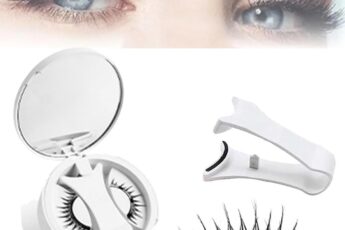Ever catch a glimpse of your lashes in the mirror and wonder, “Why do they look… not quite there?” You’re not imagining it. That soft, almost invisible line along your eyelid isn’t your eyes playing tricks on you. That, my friend, might just be what people are calling ghost lashes.
I’ll be honest, the first time I heard the term, I thought it sounded like something spooky or made-up. But once I looked closer (literally), I realized I’d seen them too — and maybe you have as well. They’re not dangerous, they’re not weird, and they’re definitely not rare. But they are puzzling at first.
So let’s sit down and figure this out together — what are ghost lashes, where do they come from, and is there anything you need to do about them?
Table of Contents
Key Takeaways
- Ghost lashes are real. They’re pale, thin, or see-through lashes that can appear among your normal ones.
- They’re usually harmless. Causes range from natural regrowth to hormones or mild lash stress.
- You can support your lash health. With gentle care, nutrition, and the right habits, ghost lashes can fade into the background.
- Don’t panic. If you feel fine, your eyes are fine, and it’s just a cosmetic quirk — not a crisis.
What Are Ghost Lashes?
Let’s keep this simple.
Ghost lashes are eyelashes that appear white, greyish, or clear — like they’ve lost all their color. You’ll usually find them mixed in with your normal lashes, almost like little threads that got skipped over. Sometimes, they’re really thin. Other times, they’re long but completely see-through.
Think of them like the pale ghosts of your usual thick, dark lashes — hence the name.
These lashes are easiest to spot in:
- Bright, direct light (like sunlight or bathroom lights)
- Close-up mirrors
- When you’re wearing mascara and they refuse to hold any color
They might show up on your upper lashes, your lower lashes, or both. And no — you’re not going crazy. They’re just a little quieter than the others.
Why Do Ghost Lashes Happen?
So now that we’ve answered the first question — what are ghost lashes — the next one is probably “why?”
Here’s the truth: there isn’t just one reason. And it’s usually not something serious.
Let’s walk through the common causes:
1. Natural Lash Shedding and Regrowth
Your lashes go through growth cycles — just like the hair on your head. And sometimes, when a lash is still growing in, it hasn’t fully developed color yet. That can leave it looking pale or translucent.
It’s just doing its thing. No drama here.
2. Hormonal Changes
Yep, hormones again. If you’ve noticed ghost lashes popping up during pregnancy, postpartum, menopause, or even when switching birth control, hormones might be the reason.
Your body might be adjusting the amount of pigment it sends to your lashes — just like it can do with hair.
3. Lash Serums or Extensions
Been using a lash serum? Or had lash extensions lately?
Some serums can affect your lash cycle in weird ways — speeding up growth but not always helping with pigment. And lash extensions can put a little strain on your lash line, which might lead to lighter regrowth afterward.
Also, glue from lash extensions can sometimes interfere with lash follicles.
4. Genetics
Let’s not forget this one. Some people just naturally have lighter lashes — even just a few random ones.
If you’re of Northern European descent, for example, chances are higher that your lashes might be blond, even if your hair is dark.
5. Weak Lash Health
If you’re not getting enough nutrition, or if your lashes are taking a beating from harsh mascara, curlers, or rubbing, they might lose strength — and pigment.
When lashes get thinner and more fragile, they can look almost clear.
So while ghost lashes might seem strange at first, they’re often just part of how your body works. You’re not broken. Your lashes are just doing something… different.
Also Read: How to Curl Lashes Without an Eyelash Curler
Can You Prevent or Fix Ghost Lashes?
The good news? You can do a few things to support stronger, healthier lashes — and that usually helps with ghost lashes too.
Here’s what’s worked for me and many others:
1. Clean Your Lash Line (Gently)
Sometimes, leftover makeup, dirt, or oil can clog lash follicles and interfere with growth. But don’t go scrubbing.
Use a gentle cleanser or micellar water with a soft cotton pad. Think of it like giving your lashes a breath of fresh air every night.
2. Feed Your Lashes From the Inside
Your lashes are made of protein — just like your hair.
Here’s what they love:
- Biotin (found in eggs, almonds, and salmon)
- Omega-3s (chia seeds, walnuts, fish)
- Vitamin E (avocados, sunflower seeds)
- Collagen (you can sip it in powders or bone broth)
You don’t need a fancy supplement — just real food your body recognizes.

3. Be Kind to Your Mascara and Curler
We’ve all done it — curling lashes after mascara. Or using waterproof formulas every day.
But over time, that combo can weaken your lashes and make ghost lashes more common.
Try:
- Using washable mascara most days
- Replacing old mascara every 2-3 months
- Skipping the curler on tired days
- Removing mascara gently — no tugging
4. Re-think Lash Serums
If you’re using one and ghost lashes are increasing, take a pause.
Sometimes less is more. And not every serum suits every person. Look for ones with peptides and no prostaglandin analogs — those can mess with your lash color over time.
5. Try Castor Oil or Lash Oils
This one’s personal.
Every night before bed, I brush a drop of castor oil onto my lash line with a clean spoolie. I swear by it.
Other oils people love:
- Jojoba oil
- Vitamin E oil
- Argan oil
They nourish the lashes and might help promote darker, fuller growth over time.
What Ghost Lashes Are NOT
Before we move on, let’s clear up a few things. Ghost lashes can look strange, but they’re not the same as:
- Lash Dandruff
That’s usually flakiness or dryness on the lash line — and it often itches. - Lash Mites (Demodex)
Creepy name, but harmless in small numbers. If you’re seeing lash fallout, itching, and crusting, that’s a different issue. Ghost lashes are silent — they don’t bother you. - Infection or Eye Disease
No redness? No pain? No swelling? You’re likely in the clear.
Ghost lashes don’t hurt. They don’t sting. They just sort of… exist. Quietly.
Check Out: How Long Do Cluster Lashes Last?
Should You Worry About Ghost Lashes?
Honestly? Most of the time, no.
Ghost lashes are more of a cosmetic mystery than a medical concern. If you’re feeling fine and your eyes are healthy, you probably don’t need to panic.
But if you’re noticing:
- A sudden increase in lash loss
- Eye discomfort
- Changes to your vision
- Swelling or redness
Then yes — call a dermatologist or ophthalmologist. Just to be sure.
For most of us, though, ghost lashes are just little oddballs on the lash line. You might notice them for a while, then forget they’re even there.
Conclusion
So, what are ghost lashes? Just little translucent reminders that even beauty has its offbeat, in-between moments.
You don’t need to hide them. You don’t need to obsess. And you definitely don’t need to feel like something’s wrong with you.
They’re harmless. They’re common. And they’re temporary for most people.
I’ve had them. You’ve probably had them. And the best thing we can do is show our lashes — even the ghostly ones — a little patience, a little love, and a whole lot of understanding.
Who knew clear lashes could teach us so much?
Frequently Asked Questions
Are ghost lashes a sign of lash damage?
Not always. They can simply be new lashes growing in or a result of light pigment. But if they come with lash loss or discomfort, it’s worth checking.
Can ghost lashes grow back thicker?
Yes, they might. With better care and time, ghost lashes often develop more pigment and thickness during their next growth cycle.
Do ghost lashes mean I’m losing all my lashes?
Nope. It might feel that way, especially if they suddenly appear. But most of the time, your lash line is just going through a quiet phase — not a falling-apart one.
What’s the difference between ghost lashes and lash breakage?
Ghost lashes are usually whole, intact hairs — just lacking color. Broken lashes are short, stubby, and uneven. Think smooth vs. snapped.



